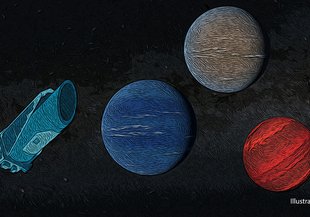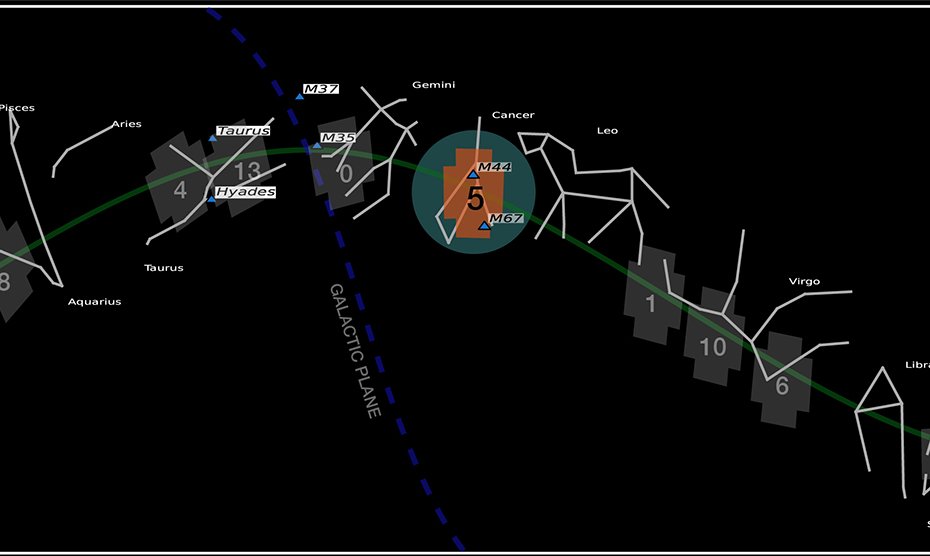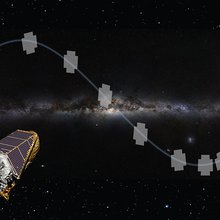- Launch Date March 06, 2009
- Arrival Date March 06, 2009
- End DateOctober 30, 2018
- Mission TypeSpace Telescope
- TargetExtrasolar Planets
Mission Overview
The Kepler Mission was a space observatory designed to survey a specific portion of our region of the Milky Way galaxy. An important part of Kepler’s work was the identification of Earth-size planets around distant stars. Kepler lost a second spacecraft reaction wheel in May of 2013, which effectively ended data collection in the original Kepler field after 4 years of continuous monitoring. However, all other Kepler assets remained intact and were used for extended observations, and dubbed the K2 mission. On October 30, 2018, NASA announced that Kepler had run out of fuel and was being retired within its safe orbit, away from Earth. Kepler left a legacy of more than 2,600 exoplanet discoveries.
Relevance to Astrobiology
Kepler searched for Earth-sized planets that orbit in the habitable zone of their host star. Such observations are directly relevant to the study of life’s potential in the Universe, and the search for life beyond Earth.
By October 2018, and after nine years in deep space collecting data, Kepler had discovered more than 2,600 planets outside our solar system. Amongst the Kepler discoveries is Kepler-186f, the first validated Earth-size planet in the habitable zone of a star other than the Sun. The vast amount of data collected by Kepler will continued to be analyzed by researchers in the years to come, providing further discoveries that will help to guide the future direction of astrobiology science.
Kepler’s current count of confirmed exoplanets and planet candidates can be found in the NASA Exoplanet Archive at:
https://exoplanetarchive.ipac.caltech.edu/docs/counts_detail.html
NASA Astrobiology Involvement
Numerous researchers supported by the Astrobiology Program are working with data from Kepler to discover potentially habitable exoplanets. Astrobiologists also use this data to develop new techniques for studying exoplanets in greater and greater detail. This work will inform future missions to characterize exoplanets and exomoons, and possibly identify signs of life by analyzing attributes of these distant worlds, such as atmospheric composition.
The Astrobiologists
VPL at the University of Washington (NExSS) Much of the research undertaken by the VPL team is focused on reexamining the limits of the habitable zone and the stellar parameters that affect planetary habitability. Results from this research are relevant in constraining the potential habitability of Earth-sized planets discovered by the Kepler mission. Additionally, VPL Team member Eric Agol, who is also a Kepler guest observer, discovered the most potentially habitable planet to date in the Kepler data, and continues to develop planet detection algorithms to improve the science yield from the Kepler data. VPL Team member Lucianne Walkowicz (Berkeley) is also a member of the Kepler scientific analysis team and works on understanding the photometric variability and flare frequency and strength for stars that serve as planetary hosts. VPL Team member Drake Deming, with graduate student Holly Short, is developing new techniques to derive planetary atmospheric characteristics from combined Kepler data, also increasing the science yield of the mission.
NAI Carnegie Institution of Washington Team member Alan Boss is a collaborator on the Kepler mission. Both he and Post Doctoral Fellow Chris Stark are active participants in the Kepler mission.
Modeling by NAINASA Ames Research Center Co-I Jack Lissauer is being used to interpret observations of planets that Kepler discovers using theoretical models.
NAI Massachusetts Institute of Technology Team members Dimitar Sasselov and Lisa Kaltenegger are Kepler Investigators.
NAI Pennsylvania State University Team members Jim Kasting, Jason Wright, Suvrath Mahadevan, and Steinn Sigurdsson are all using Kepler data and results in their Biosignatures in Extraterrestrial Settings work.




















